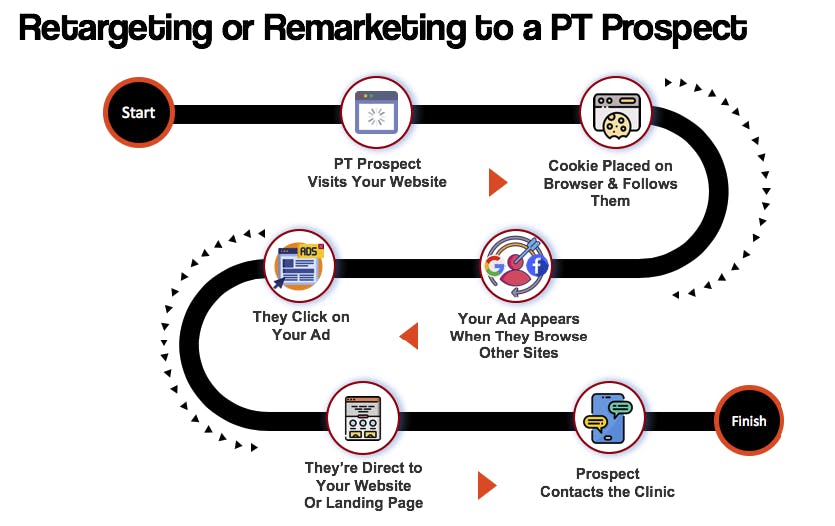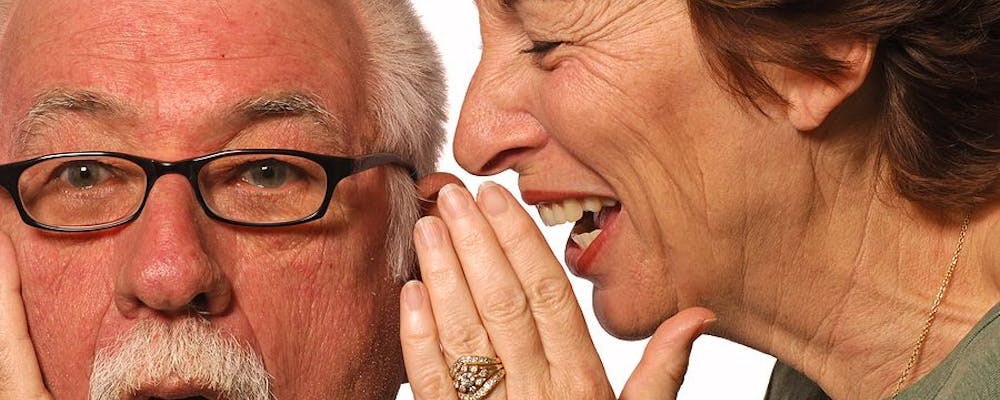Most physical therapists today would like an endless stream of direct access patients. While this is a nice idea, you’re missing out on a huge opportunity to increase your number of new patients if you are not developing physician referrals.
If you’re ready to expand your patient base, then it’s time to create a solid referral marketing system. But before you can get started, you’ve got to make sure that the patient experience and your clinical expertise are worthy of referrals. Once you’ve refined those areas of your practice, you can feel confident about asking physicians to refer their patients to you.
Ready to get started?
Let’s cover how to create a referral marketing system that works best for your practice.
#1 Set Goals

The first step to creating a solid referral marketing system is deciding what your practice goals are. Here are some questions you need to answer:
Are you a new startup trying to create an initial patient base or have you been in the game for a few years and want to try to generate a few additional referrals?
If you’ve been in business for several years and currently have physicians that refer to you, this is a great opportunity. Your goal is to get doctors that send 2-3 new patients per month to send just 1-2 more.
Do orthopedists refer out or do they own their physical therapists?
Physician-owned physical therapy services, or POPTS, is the business arrangement whereby the orthopedist(s) have their own physical therapy inhouse. It’s not easy to get them to refer out because they will lose the revenue they generate from treating their own patients. (This is a huge ethical issue more on that here. If they own their services, they refer more (reference). Doctors are a powerful group with big money, a strong lobby, and a public perception of doing what’s best for patients…not always the case).
- Are their GP, internal medicine, sports med, and/or physiatrists in private practice?
- You need to know if they can refer out or if they are required to refer to their employer (i.e. a hospital that owns them).
- How many new patients or additional new patients can you see (i.e. what’s your capacity)?
Knowing this along with your cancellation rate gives you an idea of your maximum capacity and helps establish the number of new patients you need to reach those goals.
If you don’t have referring physicians, then you’ll need to obtain a list of referring physicians from an online database service. Here’s a good resource for that https://leads-app.infousa.com/Physicians/Selections
#2 Analyze Your Referral Data

Once you define your goals, you’ll need to determine how your referral strategy can and will help you reach your goals. Download a list of all of your referring physicians over that last year.
Look at the data. What does it tell you about your target doctors and patients? What kinds of patients come from these doctors and how often?
Answering these questions will help you determine what your ideal patients and referring physicians look like. This is the first step toward drawing up a strategy for referrals.
Next, identify the number of patients each doctor refers to. Who refers the most? How many do they refer per week/month? These are the ones who know the most about your practice, who send patients to you most often, and who believe in your services.
Finally, sort your list and determine who are the top referral sources. These are the referring physicians you never want to lose. They may keep your practice in business. Always assume your competition is whispering in their ear trying to take referrals away from your practice. You should spend the most time on this group.
Next look at the next group of doctors. Maybe they send 1 or 2 per month consistently. This group is aware of you but doesn’t send many. Your goal is to try to get them to send 1-3 more each month.
Finally, you have a group that sends one or two patients over the course of the year. This group is the last segment you spend time on. The patient may have been the one that chose your practice. In other words, the doctor may have not referred to you. Therefore, you don’t spend a lot of time with this group…initially.
#3 Equip Your Referrers

In Step 2, you determined which of your current referring physicians would be ripe for providing additional referrals. Now, you just need to give them the tools to be successful. A big part of equipping them to do the job right is to educate them about the value of a. referring to physical therapy and b. why they should refer to you.
One easy way to accomplish this is to visit their office and provide educational research about the value of referring to a physical therapist in the first place. The recent article published in NEJM is something you could easily print out, add a post-it note to it, that says “I thought you might be interested in this,” and hand it directly to the doctor. I also suggest you highlight key parts of the abstract so he/she can scan it.
If you cannot, put it in an envelope and write something on the outside of it like, “Dr. Smith, I thought you might be interested in this new research…”
Second, repeatedly showing up in their office, providing materials with your logo on them and your name, are good reminders that you are there for them.
#4 Next You Need to Differentiate Your Practice from the Competition

Once you remind them of the research that supports referring their patients to physical therapy, then you need to make sure they know what makes you different from the competition — in many cases, they’ll know this just by interacting with your you and the experiences patients have an report back to them.
Some ways to differentiate your practice are:
- Your expertise – board certifications & specialties
- Your location
- Your reputation
- Your clinical outcomes
- Hours of operation
- Communication
- Customer service
- Your fees
- Types of insurance you take
- How quick you can get a patient into your office
Don’t forget to tell your referrers what types of patients you are best at treating (also from Step
Last, make it easy for your referrers to send their patients to you. Referral pads, business cards, rack cards, and brochures can help. A QR code that patients can scan and those patients to your website is helpful too.
#5 Take Action & Ask

It’s time to put your plan into action. Grab that list of ideal referrers and reach out. Remember: your physicians may be motivated in different ways, so if you see that part of your strategy is falling short, don’t hesitate to change it!
If you are talking with a front office person or any other support personnel, then you need to ask lots of questions. As the saying goes, you have one moth and two ears, use them proportionally.
One way to pique the interest of the receptionist is to tell them that you are an expert at treating the spine or extremities. Follow this up with a complex question, one that requires the receptionist to ask someone in the back office to get an answer. You might say, “My board certification was in the treatment of spondylopathy. Who does Doctor Smith refer to when patients have spondylopathies?”
Here’s another tip that’s equally important. Include the idea that you provide a “new treatment” to add curiosity. Medical staff are interested in providing referrals to clinicians that provide new treatment options (high-intensity laser comes to mind).
Other questions you want to find the answer to are:
- Who does Dr. Smith refer to?
- Who decides where the patients go? If the answer is that the doctor or referring staff member picks from a list, then you simply ask, “How do I get on that list?”
I’ve observed a number of physical therapists and salespeople (commonly and errantly called marketing people) have a nice conversation with a doctor but fail to ask for referrals. This is very important to do. When the time is right and you’ve established that you can provide value, simply say, “I’d like to see more of your X patients. Can you send me a few more so I can?”
#6 Recognize Your Referrers

People loved to be recognized for good deeds, and referring to your practice should count as one of them. When you thank and recognize your referrers, you further solidify your relationship with them. You can send a simple card for every patient that is referred, a gift of nominal value to avoid breaking legal anti-kickback regulations, and make sure that you provide timely, short and scannable progress and discharge reports..
#7 Track Your Progress

Once you’ve got a few weeks under your belt, it’s time to analyze the results and adjust accordingly. Take a look at the numbers: how many referrals have come in? What process worked best? In what ways can you make changes to your strategy to realize more ROI?
The Bottom Line
Patients coming to your clinic via direct access is a good thing; but, remember: adding more new evaluations to your schedule allows you to provide not only patients but doctors conservative, natural treatment options.
As you implement your referral marketing strategy, you might have to make several changes before you nail down a plan that really works. Be open to that, and remember to keep not only the patients’ experience but also your referring physicians’ experiences at the forefront of your efforts.
Need More Training?
E-rehab.com offers a program call More MD Referrals – Physician Sales & Marketing Training. If you have questions about this or any of our other services. Don’t hesitate to contact us at 760-585-9097 or email David Straight, DPT at dave@e-rehab.com.





































